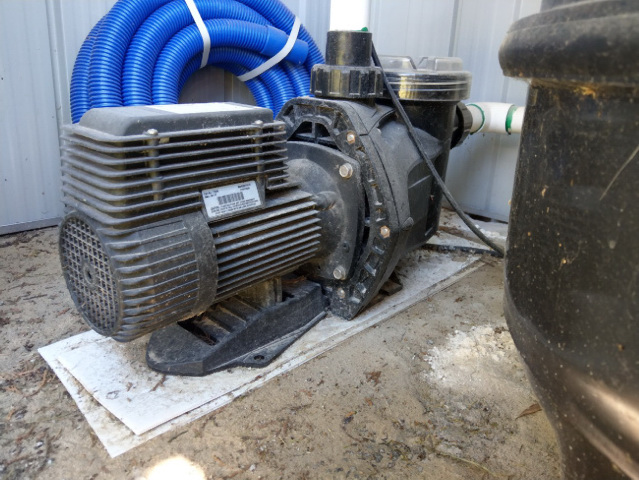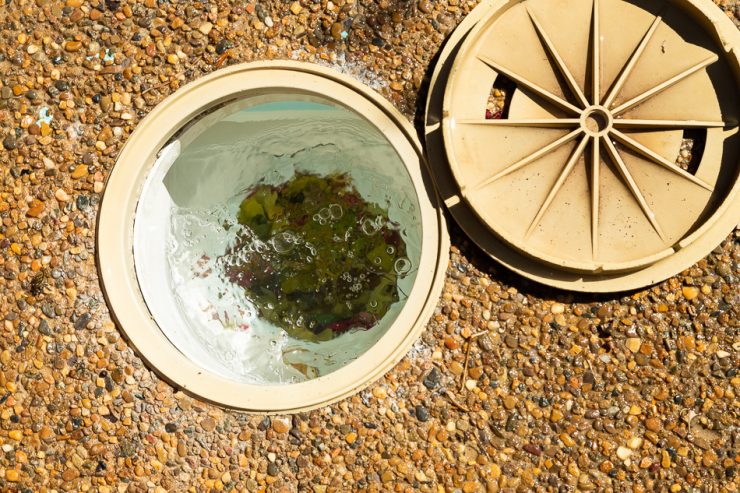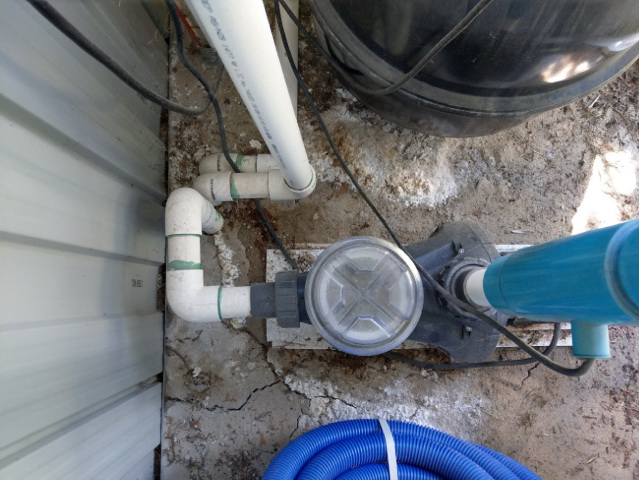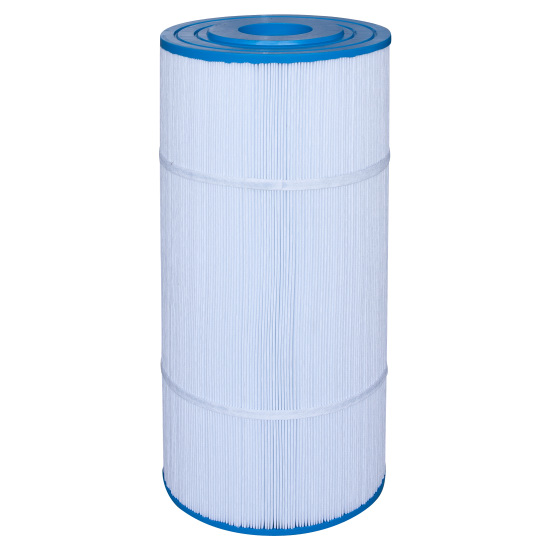Priming a pool pump is something every pool owner will need to do every now and again. If you’ve just opened the pool from winter, installed a new pool or a new piece of pool equipment or drained the pool, then you’ll have to prime the pump before starting it again.
Luckily, it’s an easy process. Make sure you keep reading to the end of the article as we have some common troubleshooting points for those of you having trouble priming your pool pumps.
Article Contents
How to Prime a Pool Pump
For a pool pump to run properly, there needs to be minimal air in it when running. When looking through the transparent pump lid you shouldn’t see large pockets or air or hear gurgling noises.
This process is the basic process for priming all pool pumps and filters and covers sand filters, DE filters, above-ground pool pumps and Intex, Summer Waves and Bestway pumps.
Here how to prime your pool pump:

1. Turn off the pool pump
2. Select either “recirculate” or “filter” on the multiport valve.
Move the multiport valve or handle to recirculate. This will pass water directly into the pool pump and back into the pool. You can also use the “filter” setting.
It’s important to only change filter settings when the pool pump is switched off.
3. Fill the Pump with Water
Before opening the lid, release the pressure in the pool filter. You can do this by opening the pressure release valve or bleed valve. It’s usually located on the side or top of the filter. Close the valve again when all the air has stopped coming out of the valve.
With the pressure released from the filter, open up the pool pump lid. Whilst you have the pump open, empty the pump basket and clean all the debris from it.
Now take a garden hose or bucket of water and fill up the pump. You want to keep filling up the pump until the water is at the brim. You may find the water does down. Sometimes the water level in the pipes is low and this will happen. That’s OK, just keep filling until the pump overflows and the water level in the pipe remains at the top and doesn’t drain too quickly.
4. Refit the Lid and Switch on the Pump
Inspect the lid and the lid seal for damage before refitting it. Make sure the lid is seated correctly and is tight to prevent possible air leaks.
Switch the pump back on.
The pump will gurgle and make noises for 30 secs to a couple of minutes whilst it sucks the air out of the system. Run the pool pump to circulate water for several minutes. Keep watching the water in the pump lid and listen to the pump.
If you keep seeing large air bubbles in your pump, or excessive bubbles coming from the jets, you could still have air in the system. See troubleshooting below for more details of what to do.
Now open the air relief or bleed valve on the filter housing until water flows out of it (20-40 secs), then close it again. This will release the air from the filter.
Tip: Always prime your pool pump after draining and refilling the pool to get rid of any air pockets. You’ll need to prime your pump if you’re opening your pool after a winter shutdown, too.
When Should You Prime Your Pool Pump
Your pump is designed to be full of water. Without sufficient water in it, it will not operate correctly and may burn out.
Here’s when you will need to prime your pool pump:
- Anytime you open your pool’s system
- Opening your pool after winter shut down
- If the water level has gone below the skimmer
- If you’ve replaced the pump or filter or repaired a pipe
- After cleaning the pool filter
When restarting your pump, prime it first then check it has enough water in it. You can do this by looking in the pump’s transparent lid. If the water is not all the way to the top, open it up and reprime it by filling it up. If it is making gurgling noises or pulsating, try repriming it.
Don’t leave the water level low, as low water levels in your pump will mean excessive heat being generated. And this excessive heat will burn out the seals and bearings. If that happens, you’ll likely be up for a new pump.
Why Pool Pump Loses Prime or Won’t Prime. And How to Fix.
1. Reprime the Pump
If your pump won’t prime or loses prime the first thing you should try is repriming it. Sometimes the water level can be a little low in the pump which means the pump can’t create the required suction to start properly.
Open up the pump and keep filling it with water until the water overflows and does not go down again. Get the lid on fairly quickly and restart the system.
2. Low Water Level
Your pool pump draws water from the skimmer. If the pool’s water level is incorrect, this will introduce air into your pool pump and will cause pump priming issues. The skimmer has to have enough water in it so the pump is never starved for water, even when your kids are splashing around and doing bombs.
Make sure the water level is about halfway up the skimmer or a little bit higher. If the water level is low, fill up your pool with a garden hose. This will ensure the pump has enough water and doesn’t lose it’s prime. Reprime the pump after does this.
3. Clogged Up Skimmer
As mentioned above, the pump draws the water in from the skimmer. If the skimmer basket is full and blocked up, this will make it hard for the pump to freely suck the water into it.
With the pump switched off, empty out the skimmer basket. Make sure all the leaves and debris are removed then replace it.

4. Clogged Up Pump Basket
A pump basket or strainer overfull with debris and leaves is enough to impede the flow of water. If the water flow is impeded, the pump will not be able to draw enough water fast enough to hold its prime.
To clean it, with the pump off, release the pressure in the pool filter, then open up the pump lid and clean out the debris.
5. Clogged Impeller
Sometimes leaves and debris can get past the pump basket and into the impeller. The impeller is the spinning part of the pump and draws the water through the pump. It kind of looks like a propeller of a boat.
To check this, with the pump switched off at the breaker, release the pressure in the pool filter. Now open up the pump and remove the pump basket. Reach into the pump and remove any debris in there.
6. Air Leaks in Suction Side
Having an air leak is another reason a pool pump won’t prime or hold prime. Air leaks occur on the “suction” side of the pump.

Start by making sure all the unions are seated correctly and are tight. Usually, leaks in pipes will occur at the corners and joins. You can undo the unions and check the o-rings and seals are in good condition too.
Another common reason for the pump losing prime is a broken or leaking pump lid. Open up the lid and check the rubber seal is in good condition. Also carefully check the lid for cracks. Replace the lid and rubber seal if they aren’t in good condition.
How Long Does it Take to Prime a Pool Pump
Priming a pool pump should only take a few minutes. Usually, the most time-consuming and difficult part of the job is taking the lid off the pool pump. If you have a stuck lid, we have some tips here: How to Undo a Stuck Pool Pump Lid Without Breaking It
After filling up the pump with water and starting it again, it should only take a couple of minutes to be properly primed. If the pump continually gurgles or it still has a lot of air in it, you should follow our guide:
How to Bleed the Air From Pool Lines
Is Bleeding a Pool Pump the Same as Priming?
Bleeding a pool pump is essentially the same thing as priming a pool pump. Bleeding is a term used, in many industries, to get the air out of something.
In this case, priming the pump is preparing it for use by adding water to it. The process of adding water to it removes most of the air. Having enough water in the pump is necessary to create enough suction to pump the water properly.
How Remove Air Out of Pool Pump
When a pool pump has air in it, it will not operate correctly. It may cavitate and in some extreme cases, it could overheat seizing up the bearings.
There are three methods to bleed air out of the pool pump:
- The first one is to reprime the pool pump.
- The second is to bleed the pool lines/pipes
- The third is to let the pump fix itself by running it
1. Reprime the Pump
In many cases, if you have air in the pump you can fix the issue by repriming it. Simply switch it off, open up the pump lid and fill up the pump with water. It’s important to fill the pump up to the brim. It may take a bit of water if the water level in the pipes is low. With the lid fastened, switch the pump back on.
If your pool system is in good order, this should bleed the air out of your pump. But if it doesn’t there could be several reasons:
- Pool water level below skimmer
- Blocked up skimmer or pipe
- Pump basket full of leaves
- Air leak in system
We have a full article on air leaks here:
Air Bubbles In Pool Or Pump | Causes and Dangers
2. Bleed the Pool Pipes/Lines
If you have excessive air in your pool lines, the pump will have air in it. It may not prime or lose prime. Pool pumps need to be fully filled with water to operate correctly. Excessive air in the pool pipes means that the pump will not have sufficient water in it to keep its prime.
Bleeding the pool lines and pipes is simple. Start by shutting the valves to the main drain and close the other pool valves too. With the multiport valve set to the “filter” position, switch on the pump and then slowly open one valve at a time until the pump draws the air out of the pipes and out of the system.
We have a detailed article on the full process here:
How to Bleed the Air From Pool Lines
3. Leave the Pump to Run
A common hack to get air out of the pump is to let the pump run for a few minutes. The air might come out as the pump circulates water.
This works best for air pockets trapped after the pool pump was switched off. When you turn on the pool pump, the water circulates through the skimmer to the filter and back into the pool through the return jets.
If this doesn’t work, and you haven’t tried the above steps, try these steps before calling in a professional.
Tips for Priming Above Ground Pool Pumps

If your above ground pool pump is not priming correctly or losing prime after following the above steps, check out these specific tips.
Priming above ground pool pumps is a little different from priming inground pools. Most of the time, the pump and filter are located level with the bottom of the pool, and so the water flows downhill from the pool into the pump making it mostly unnecessary to prime the pump.
If you’re having trouble keeping prime, try these things:
- Make sure hoses are tight
- Clean out skimmers and pump baskets
- Replace or clean dirty cartridges
Tips for Priming Intex, Summer Waves and Bestway Pool Pumps
If your Intex, Summer Waves, or Bestway pool pump is losing prime or not pumping water properly, it’s usually a fairly easy fix.
Usually, Intex pool pumps such as the Krystal Clear series of cartridge filters and sand filters will not need priming most of the time. This is because Intex pumps and pool filters are most often installed level with the bottom of the pool, so the water will naturally flow down from the pool and into the pump.
Here’s some reasons why your Intex pool pump and filter will not prime:
- Air in the system
- A dirty filter
- Clogged skimmer or pipes
- Loose hoses or damaged hoses
Usually, the biggest culprit for Bestway, Summer Waves and Intex cartridge filter pumps not priming is a dirty filter or air in the system. The filters do not last long and clog quickly.
To fix this, simply replace the filter. To remove the air from the system, loosen the knob on the very top of the filter to let the air out. When you see water coming out, tighten it back up, you’ve now bled the air.
You can get replacement Intex cartridge filters here:

Conclusion
If you’ve been having issues priming your pool’s pump or just needed to know how to prime your pump, you should by now know enough to get your pump working again.
If after reading this article, you are still having trouble, it’s time to call a pool professional in to sort out the issue.
Happy swimming!
Related Reading: Pool Pump Current (Amps) – 0.5 to 2.5 HP Motors

